The villages at the heart of India's water dispute
- Published
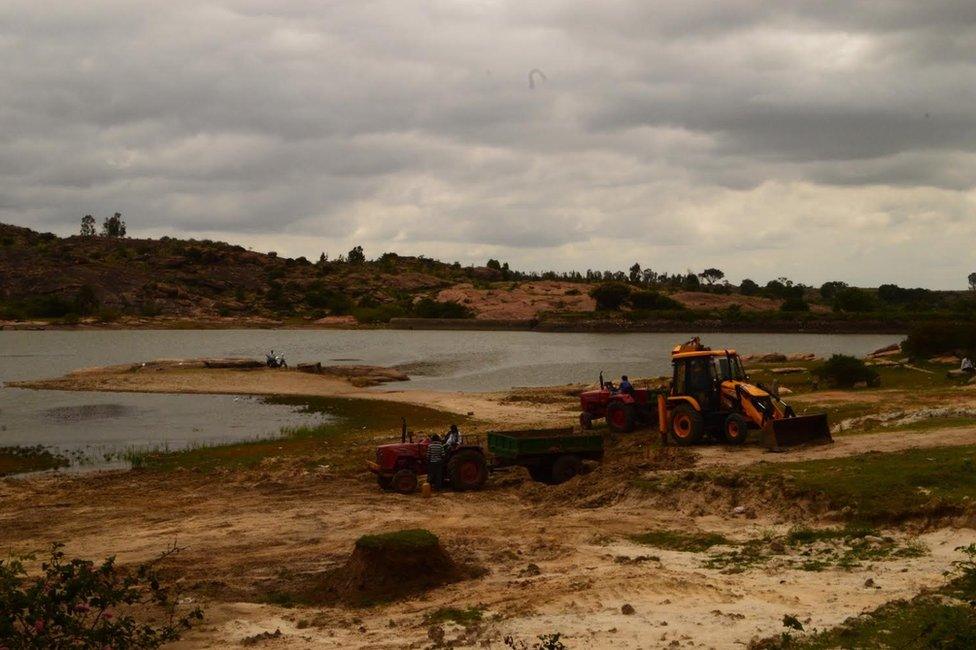
The lakes in Melkote village are drying up
On the night of 31 August, Mandya, a district on the banks of the fast-depleting Cauvery river in the southern Indian state of Karnataka, received heavy rains after three weeks of unusually dry weather.
The rain-lashed night brought hope to local farmers like Shekar Guruve Gowda of Melkote village who grow crops such as sugarcane, maize and finger millets.
Next morning though, the sun was shining again. Mr Gowda, whose rain-fed farm is a mile away from his home, spent about seven hours sitting under a coconut tree waiting for more rains, which would help his crop to survive.
Two weeks on, he is still waiting for rain, and Mr Gowda now worries that his crops will die.
'Worrying'
Although Melkote is surrounded by lakes connected to the Cauvery through canals, they have been running dry because of lack of rains and insufficient water in the river.
Apart from feeding six family members, Mr Gowda also has to provide fodder and water for two cows and two calves.
"I have not been able to grow rice even for my family. I depend on cheap state rations for food now. As a farmer, if I have to depend on someone else for food, it's a worrying situation for me and for India," Mr Gowda said.

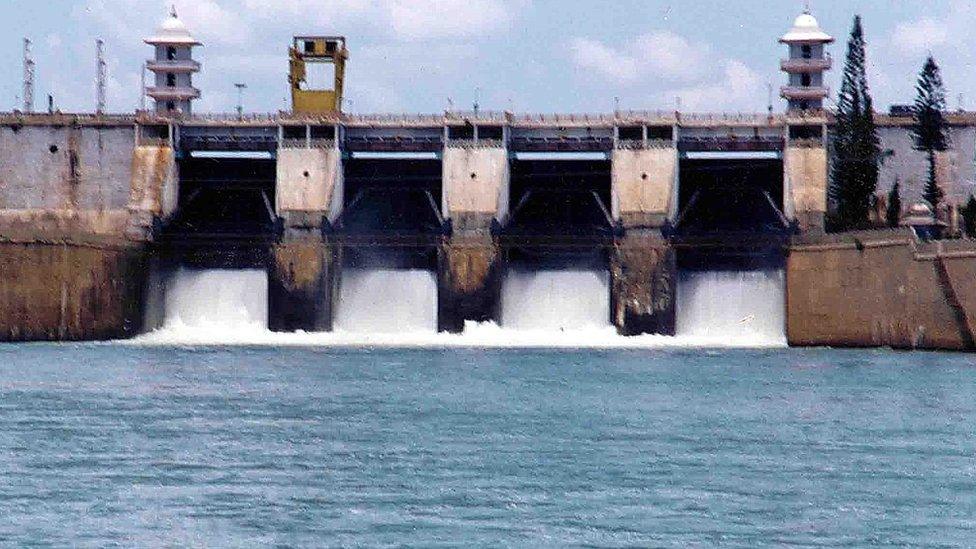
Karnataka says water levels in Cauvery have declined because of insufficient rainfall
India's water war
The Cauvery originates in Karnataka and flows through Tamil Nadu before joining the Bay of Bengal.
The dispute over its waters originated in the 19th Century during the British rule between the then Madras presidency (modern day Tamil Nadu) and the province of Mysore (now Karnataka).
Karnataka and Tamil Nadu have both argued that they need the water for millions of farmers in the region.
The Cauvery river water tribunal was set up in 1990 after the failure of several rounds of talks between the two states.
Dozens of meetings have been held to find a settlement to the century-old dispute.
In 2007, the tribunal ruled Tamil Nadu state would get 419bn cubic feet of water a year. Karnataka would get only 270bn.

The Cauvery, which flows through Mandya, is at the heart of one of India's intractable water disputes.
Earlier this month violence broke out in Bangalore, the capital of Karnataka, and other parts of the state after a Supreme Court ruling ordering Karnataka to share water from the river with neighbouring Tamil Nadu. Both states say they urgently need the water for irrigation and a battle about access to it has raged for decades.
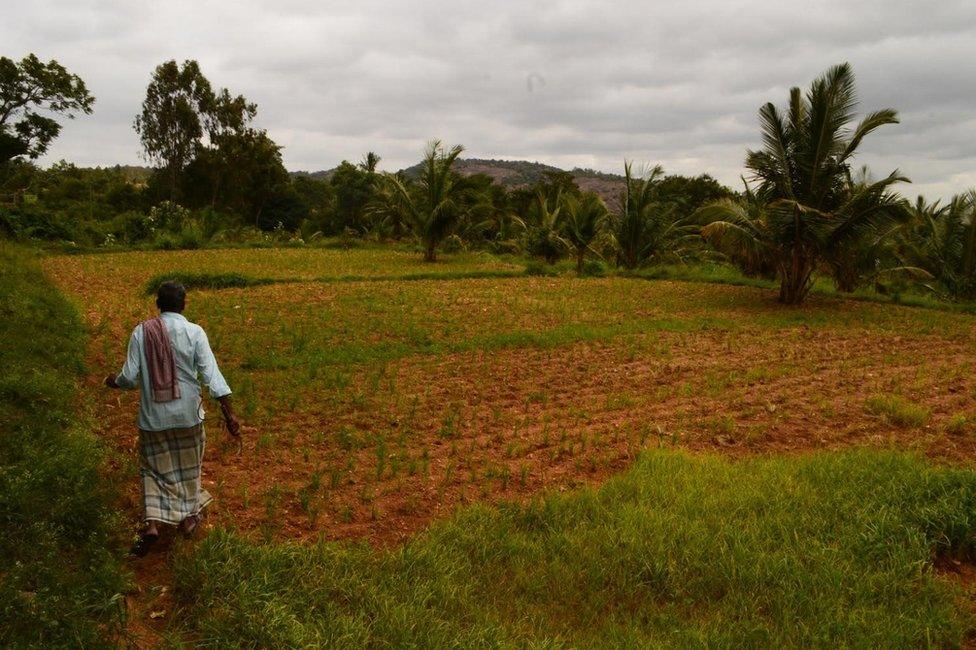
Shekar Gowda has been waiting for rain for weeks
About 40 miles away from Mr Gowda's farm, in Kirugavalu village, Sayed Ghani Khan, a farmer who grew paddy on a 10-acre plot last year, is waiting for water so that he can cultivate at least an acre of land this time. Half of his land is irrigated; and the other half fed by rains.
Mr Khan, who has received government awards for excellence in farming, says he is worried after a local official told him that no water from the Cauvery would be available to irrigate farms this year. The lack of sufficient rains has worsened matters.
The majority of the 30,000 villages in Karnataka received less than the required rainfall in August. The situation has not been very different this month. Some 41% of the 3,598 irrigation tanks in the state are dry.
Dry farms
Only two thirds of the cultivable land in four districts straddling the river - Mandya, Mysore, Chamarajanagar and Ramanagara - were cropped until 12 September, say officials.
Water levels of four reservoirs in the Cauvery were at a fourth of normal levels, and half of 2015, according to officials. Whatever is available has to be shared.
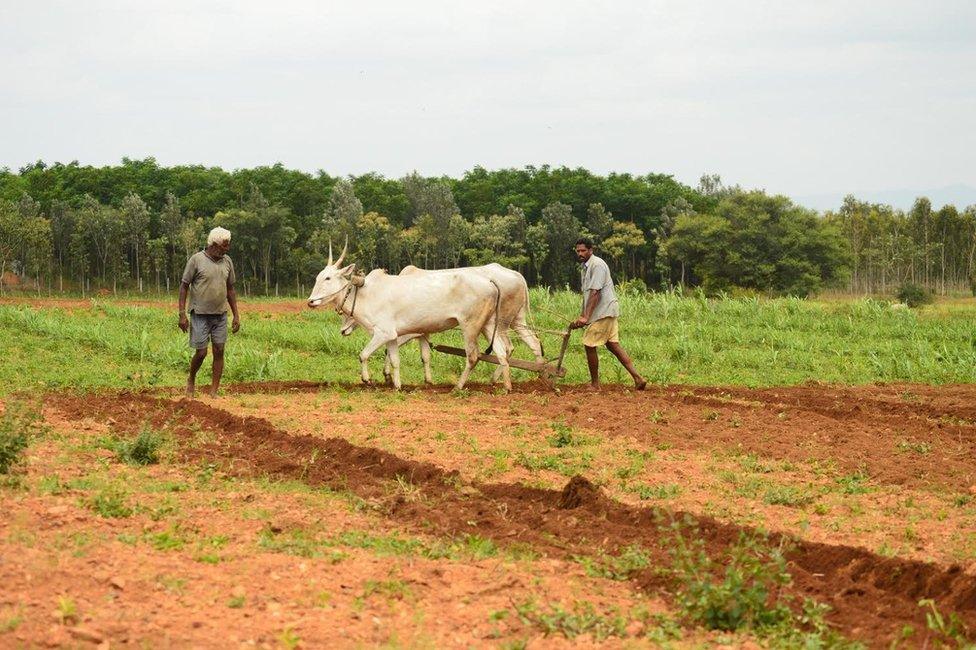
Farmers in Mandya mostly grown paddy, maize, sugarcane and millets
"The south-west monsoon that brings 70% of the country's annual rainfall, which was weak here until now, is set to end soon. And we see no signs of improvement. Farmers are in dire straits. People have to use water judiciously and efficiently. Else, we will have a drinking water crisis in summer," Karnataka State Natural Disaster Monitoring Centre chief Srinivas Reddy said.
'Live and let live'
When the Supreme Court on 2 September asked Karnataka to "live and let live", the state softened and offered to release 10,000 cubic feet of water per second to Tamil Nadu every day for five days.
On 5 September however, the top court ordered Karnataka to release 15,000 cubic feet of water per second for 10 days. This ruling was later modified to 12,000 cubic feet of water per second until 20 September.
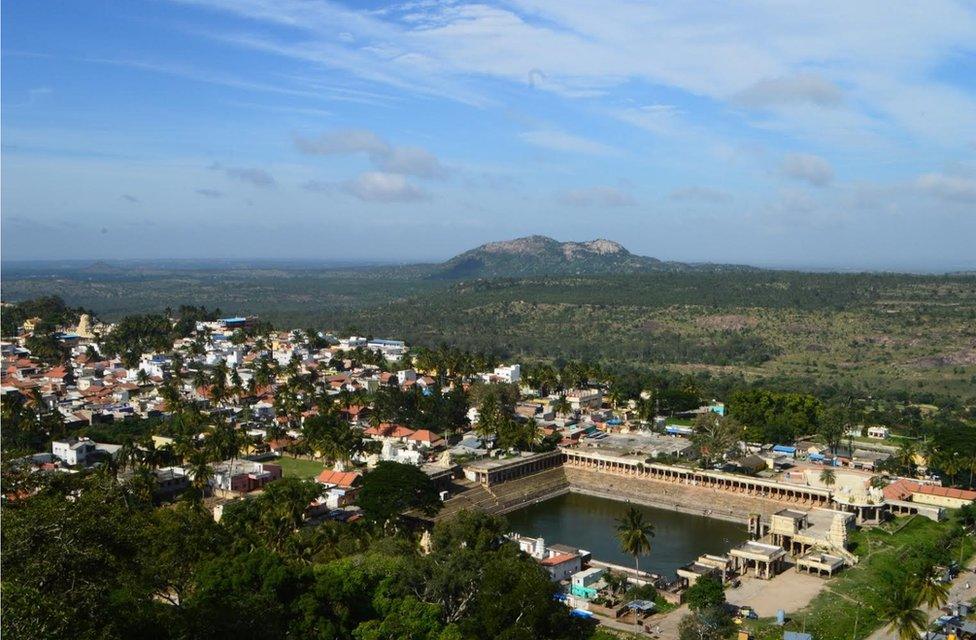
Melkote is one of the villages worst affected by the water crisis
Mandya, where the farm crisis is looming large, became the epicentre of protests. Vehicles were torched and roads were blocked. About 37 people were arrested.
The violence in the technology hub, Bangalore, forced the closure of offices and disruption of public transport. According to Bangalore police, a 22-year-old-woman led the mob and set fire to 42 buses on the outskirts of the city. Police have imposed an emergency law that prohibits public gatherings, and more than 15,000 officers have been deployed across the city.
On Tuesday, the Supreme Court directed Karnataka government to release another 6,000 cubic feet of water to Tamil Nadu for seven more days.
Karnataka's Chief Minister Siddaramaiah has said that the order was "unimplementable" and the water was only enough to meet state's drinking water requirement until May 2017.
Karnataka has now decided to defy the Supreme Court order and not release water to Tamil Nadu.
The decision is likely to trigger a constitutional crisis and bring more worries to the two beleaguered states in the days to come.
Prabhu Mallikarjunan is an independent journalist based in Bangalore